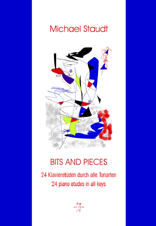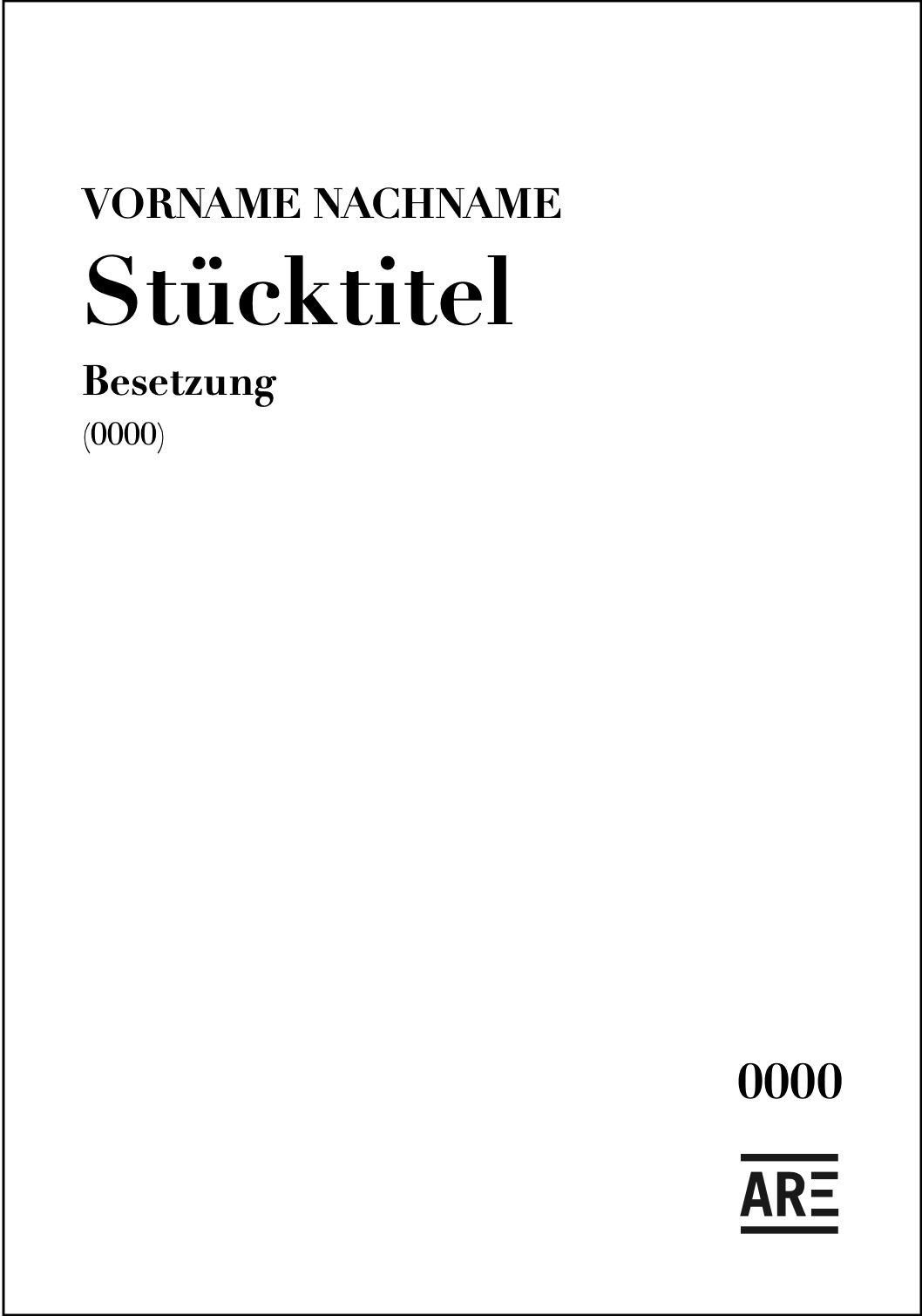Beschreibung
Die Komposition „Musik für Nebenan“ (2020) thematisiert den Ort klingender Musik. Die Idee ist nicht in den ausgesuchten Tönen, sondern in der Aufführungssituation zu suchen. Die Musik wird in einem Nebenraum aufgeführt, sei es in der Abstellkammer, einem separaten Ausstellungsraum eines Museum oder einem Foyer, so dass die Klänge von fern an den Hörer herantreten, flächig untermalend.
Inspiriert vom Komponisten Morton Feldman bietet die ruhige und lange Form eine Projektionsfläche für den Hörer, wie eine Art Filmmusik. Die Musik wird zur „Nebensache“, zur tönenden Untermalung. Währenddessen kann ein weiteres Stück aufgeführt werden oder ein Happening stattfinden, das von den Akkorden der „Musik für Nebenan“ eingefärbt wird. So wurde bei den ersten Aufführungen parallel die Komposition „Lebenswege“ (Are 2368) oder das elektronische Tonbandstück „Makrokreise“ von Tobias Tobit Hagedorn (Are 2370) aufgeführt.
Die Hauptsache wird zur Nebensache, die Nebensache zur Hauptsache, je nach Priorität des Hörers. In unserer schnelllebigen Welt der Parallelitäten wird das „Nebenan“ zur Hauptsache, erscheint das Nicht- Anwesende wichtiger als das Anwesende. (D.S.)
Uraufführung: 12.2.2020 Kaiser-Friedrich-Gedächtniskirche, Berlin, Jan Gerdes, Klavier
The composition „Musik für Nebenan“ (2020) deals with the place of sounding music. The idea is not to be found in the selected tones, but in the performance situation. The music is performed in an adjoi- ning room, be it a storage room, a separate exhibition room of a museum or a foyer, so that the sounds approach the listener from afar, underscoring the space.
Inspired by the composer Morton Feldman, the quiet and long form offers a projection surface for the listener, like a kind of film music. The music becomes a „secondary matter“, a background sound. In the meantime, another piece can be performed or a happening can take place, coloured by the chords of the „music for next door“. Thus, during the first performances the composition „Lebenswege“ (Are 2368) or the electronic tape piece „Makrokreise“ by Tobias Tobit Hagedorn (Are 2370) were performed in parallel.
The main thing becomes a secondary matter, the secondary matter becomes the main thing, depending on the priority of the listener. In our fast-moving world of parallelism, the „next door“ becomes the main thing, the not-present appears more important than the present. (D.S.)
Are 2369



 Daneben spielte er zahlreiche Uraufführungen von Werken jüngerer Komponisten (Janson, Odeh-Tamimi, Pena, Froleyks, Köszeghy, Ruttkamp, Seidl, Wozny u.a.). Sein überwiegend auf zeitgenössische Musik ausgerichtetes Repertoire (Herchet, Hölszky, Kagel, Ligeti, Rihm, Stockhausen, Stäbler u.a.) präsentierte er auf mehreren CDs beim Label Wergo und Querstand in Zusammenarbeit mit dem Deutschlandfunk, zweimal hintereinander erhielt er dafür den Preis der Deutschen Schallplattenkritik. Als Komponist wurde er mit Preisen ausgezeichnet (Deutscher Musikwettbewerb, Klaus-Martin-Ziegler Preis, Schneider Schott Musikpreis Mainz u.a.).
Dominik Susteck (*1977 in Bochum) has been organist of the Cologne Art Station Sankt Peter 2007-2021. In addition to teaching at musical colleges in Essen, Düsseldorf, Weimar and Cologne, he has attracted attention with modern improvisational concerts. In addition, he has played numerous world premieres of works by younger composers (Janson, Odeh-Tamimi, Pena, Froleyks, Köszeghy, Ruttkamp, Seidl, Wozny and others). He presented his repertoire, which is predominantly oriented towards contemporary music (Herchet, Hölszky, Kagel, Ligeti, Rihm, Stockhausen, Stäbler and others) on several CDs on the Wergo and Querstand labels in cooperation with Deutschlandfunk, and twice in a row he received the German Record Critics' Award for this. As a composer he has been awarded prizes (German Music Competition, Klaus-Martin-Ziegler Prize, Schneider Schott Music Prize Mainz and others).
Daneben spielte er zahlreiche Uraufführungen von Werken jüngerer Komponisten (Janson, Odeh-Tamimi, Pena, Froleyks, Köszeghy, Ruttkamp, Seidl, Wozny u.a.). Sein überwiegend auf zeitgenössische Musik ausgerichtetes Repertoire (Herchet, Hölszky, Kagel, Ligeti, Rihm, Stockhausen, Stäbler u.a.) präsentierte er auf mehreren CDs beim Label Wergo und Querstand in Zusammenarbeit mit dem Deutschlandfunk, zweimal hintereinander erhielt er dafür den Preis der Deutschen Schallplattenkritik. Als Komponist wurde er mit Preisen ausgezeichnet (Deutscher Musikwettbewerb, Klaus-Martin-Ziegler Preis, Schneider Schott Musikpreis Mainz u.a.).
Dominik Susteck (*1977 in Bochum) has been organist of the Cologne Art Station Sankt Peter 2007-2021. In addition to teaching at musical colleges in Essen, Düsseldorf, Weimar and Cologne, he has attracted attention with modern improvisational concerts. In addition, he has played numerous world premieres of works by younger composers (Janson, Odeh-Tamimi, Pena, Froleyks, Köszeghy, Ruttkamp, Seidl, Wozny and others). He presented his repertoire, which is predominantly oriented towards contemporary music (Herchet, Hölszky, Kagel, Ligeti, Rihm, Stockhausen, Stäbler and others) on several CDs on the Wergo and Querstand labels in cooperation with Deutschlandfunk, and twice in a row he received the German Record Critics' Award for this. As a composer he has been awarded prizes (German Music Competition, Klaus-Martin-Ziegler Prize, Schneider Schott Music Prize Mainz and others). 

